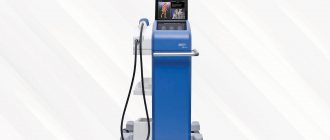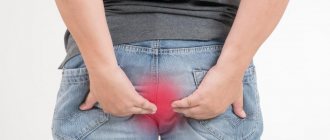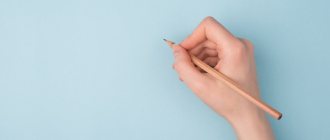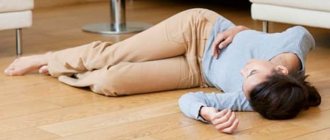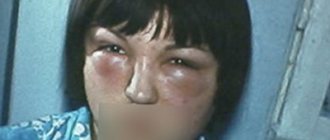Acute low back pain is the most common type of back pain, which affects almost half of people who lead a sedentary lifestyle, are overweight or have chronic diseases of the lumbosacral spine (for example, osteochondrosis).
Acute lower back pain
Such pain can be aching, shooting, stabbing, dagger-shaped, burning. The intensity depends on the cause of occurrence, the presence of inflammatory processes, tonic tension of the paravertebral (paravertebral) muscles and the age of the patient.
The intensity of pain depends on the causes that caused it
In elderly and senile people, pain is usually more severe, which is associated with the natural processes of aging and drying out of the cartilage tissue of the spine. You can cope with acute pain with the help of medications, but the prevention of back diseases is of great importance in shaping a further favorable prognosis.
Prevention of back diseases is no less important than timely treatment
General information
Both mustard plasters and medical cupping are non-drug treatment methods that are used as an auxiliary therapy for diseases of the lungs and bronchi.
Each person should clearly understand that these methods cannot be the main treatment. The effect of mustard plaster occurs at the reflex level. If a person is given medical cupping, then their effect is comparable to autohemotherapy . Opinions are currently divided regarding the use of these methods. Some people argue that these methods of treatment are outdated and there is no point in using them. But many still use them, sincerely considering both cups and mustard plasters to be effective methods to alleviate the condition of lung diseases. However, it is necessary to clearly know when mustard plasters can be placed in adults, since there are clear indications and contraindications for the use of both mustard plasters and medical cups. They will be discussed in this article.
Treatment of pneumonia in Moscow
Patients can be treated at home and undergo physiotherapeutic procedures in the rehabilitation department of the Yusupov Hospital: diathermy, inductothermy, microwave, UHF. Resorption of inflammation in the lungs is facilitated by chest massage and physical therapy.
Get advice from an experienced and qualified doctor by calling. Doctors at the Yusupov Hospital treat mild to moderate pneumonia at home. Pulmonologists individually draw up a treatment regimen for each patient, taking into account his individual characteristics and the course of the disease.
Make an appointment
How mustard plasters and jars work
Medical banks
They are small glass vessels with a rounded bottom and thickened edges. The capacity of such a vessel can be from 30 to 70 ml. They are used to reduce the severity of pain and reduce the severity of inflammatory processes.
How do banks operate?
When oxygen is burned in the jar, negative pressure (vacuum) is created, and human skin, as well as subcutaneous tissue, are absorbed into the jar. As a result, blood flows from the underlying organs and tissues. The smallest blood vessels rupture and numerous hemorrhages appear in the skin. Gradually, the blood breaks down, the product of which is biologically active components. Then they are absorbed into the blood, and this stimulates individual tissues and organs. As a result, the severity of pain decreases and inflammatory processes in the body resolve.
Mustard plasters
Mustard plasters are a product that is a sheet of thick paper on which is applied a layer of low-fat powder made from mustard seeds. Mustard plasters are also produced in the form of a package of porous cells, inside of which there is mustard powder.
How do mustard plasters work?
When mustard plaster comes into contact with the skin, mustard essential oil irritates it. Due to local hyperemia, blood vessels dilate and blood flow in this place is activated. Skin receptors are also activated, as a result of which the level of excitability of the sympathetic part of the central nervous system increases. Sympathin and adrenaline accumulate in the blood, which intensifies the phagocytic reaction of the immune system.
As a result, the patient’s pain level decreases, the tissues warm up, their trophism increases and the protective function is activated. An active passage of mucous secretion from the bronchi is also noted.
Contraindications
Banks or mustard plasters, indications and contraindications. They must be known and taken into account. So, both medical cupping and mustard plasters cannot be used in the following cases:
- At elevated body temperature, and also for another day after it has returned to normal.
- For various skin diseases, especially if traumatic and pustular lesions develop.
- If there are signs of increased bleeding.
- During pregnancy , as well as when a young mother is breastfeeding.
- People with cancer.
- For tuberculosis of the lungs and spine.
- If convulsions .
- With increased mental arousal.
Separate contraindications for such procedures are also determined.
Medical banks:
- baby's age up to 3 years;
- blood diseases;
- exhaustion of the body;
- vascular and heart diseases: heart defects, coronary artery disease, high blood pressure, heart failure;
- insomnia;
- vascular sclerosis, thrombosis .
Mustard plasters:
- baby's age up to 1 year;
- psoriasis;
- bronchial asthma;
- tendency to allergies , allergic manifestations;
- Children need to be given children's mustard plasters, but if parents are interested in the age at which children can use ordinary mustard plasters, then up to 3 years they can only be used with the inactive side to the skin or through a napkin or bandage.
When does the effect appear?
It is quite understandable that patients are interested in whether cupping and mustard plasters are effective for bronchitis and other diseases of the respiratory system. First of all, you need to take into account that it is, of course, impossible to treat such serious diseases exclusively using these methods. It is important that the diagnosis is correctly established and an adequate treatment regimen is prescribed, which, among other things, will include antibacterial therapy if we are talking about pneumonia or acute bronchitis .
However, the answer to the question whether it is possible to use mustard plasters as an auxiliary therapy for bronchitis is positive. But you should still consult with a doctor first, who will tell you how and when to apply mustard plasters and cups to get the maximum effect.
Also, for lung diseases, patients are prescribed massage and breathing exercises, because these procedures can significantly alleviate the condition of patients.
As a rule, the patient notes an improvement if 2-3 procedures with cupping or mustard plasters were performed in parallel with the use of the main treatment. However, if there is no positive dynamics after several procedures, then there is no need to carry them out further.
These procedures are also used as additional methods for pneumonia. As a rule, pneumonia is severe, and there is a high risk of developing various complications with this disease. Therefore, it is very important not to worsen the patient’s condition, which is why you should ask your doctor about whether cupping can be used for pneumonia in each specific case. After all, there is a possibility of rupture of layers of lung tissue located nearby if cupping is used during pneumonia.
It is worth agreeing with a specialist whether it is possible to apply mustard plasters for pneumonia, and whether such a need exists.
In the case of bronchitis, cupping should only be used during the period when the patient begins to recover, and he has no symptoms of body intoxication, respiratory failure, or fever for at least several days.
Approximately the same approach should be taken to the use of mustard plasters - it makes sense to use them already at a time when a person with pneumonia or bronchitis begins to recover. In this case, the patient should not have signs of intoxication of the body. Mustard plasters should not be installed at temperatures. For parents who ask whether it is possible to put mustard plasters on children who have a fever, it is important to remember that this should absolutely not be done.
If we are talking about an adult patient, and at what temperature they can be placed depends on his general condition. It is best to initially obtain a doctor’s permission to use them.
The use of mustard plasters is advisable if a person is bothered by a dry cough - strong and painful. Very often, this symptom manifests itself in people who have had bronchopneumonia , pneumonia , and bronchitis , for a long time even after the person has already recovered and feels well.
This procedure stimulates the elimination of congestion in the lungs, since warming with the help of mustard plasters draws blood through anastomoses into the subcutaneous vessels from the affected area of the lung. This method also stimulates the removal of mucus from the bronchi and helps strengthen the immune system .
For bronchitis, after the temperature has returned to normal, mustard plasters can be applied within a day. For pneumonia - two days after the temperature becomes normal.
How often can mustard plasters be applied to adults and children? This procedure should not be used more than once a day. If we are talking about a child, then mustard plasters are applied once every two days. This procedure should not be used more than 5 times.
Patient reviews
In terms of effectiveness for colds and muscle pain, mustard plasters are rated highly. Patients note the following advantages:
- Low price and availability (mustard plasters are available in almost any pharmacy).
- A noticeable improvement in well-being and a reduction in the period of illness.
- Mustard plasters are a natural remedy that does not have a negative effect on the body.
- After warming up in this way, sleep improves.
The disadvantages of the product are the following:
- By neglecting safety rules and intending to “endure” severe pain, some buyers received burns, up to the second degree.
- Inconvenient to use. It is quite difficult to put mustard plasters on yourself; someone’s help is needed.
- Children don't like mustard plasters. In any case, the procedure can hardly be called pleasant, so persuading a child to undergo it is not at all easy.
- Marriage occurs. Poor packaging can cause mustard to “leak” through the pores in the bag. This can cause burns or make the procedure completely impossible.
The use of mustard plasters is safe if the described technique is followed. Their effectiveness is a controversial issue. However, it’s definitely worth trying to apply packages in order to evaluate the effect of mustard plasters.
How to put cans on your back correctly
It is important to clearly understand why the cans are placed on the back and how to do it. They will help you understand how to put cups on your back, videos that explain the features of this procedure, of which there are a lot on the Internet.
Before using this method, you need to find out from your doctor whether it is advisable to do this. As already reported above, the answer to the question of whether it is possible to place jars at a temperature is negative. But the attending physician should still tell you whether cupping can be used for bronchitis, or whether cupping can be used for coughing.
How to put cans on your back correctly? They are placed depending on where the source of inflammation is localized.
For bronchitis, cough, pneumonia, they are placed under the shoulder blades and between them, on the lower back, under the collarbones. It is important to target areas where there is a large layer of fat or muscle. It is necessary to avoid places where bones protrude, and also not to affect the area of the projection of the heart. 5-6 cans are placed on each plot.
To carry out the procedure, you need to take:
- a set of jars, dry and clean;
- tweezers or clamp;
- alcohol;
- cotton wool;
- petrolatum;
- matches.
Before the procedure, the person must lie on his stomach, his back is wiped with alcohol and lubricated with Vaseline. Cotton wool is wound onto tweezers or a clamp, which is then dipped in alcohol and, after squeezing a little, is set on fire.
It is most convenient to hold the jar with your right hand, quickly insert a clamp with cotton wool into its cavity with your left hand, and after 1-2 seconds apply it to the skin. If the jar is placed correctly, then the skin and fiber under the skin are absorbed into its cavity. This is noticeable in the form of a towering roundness. At the same time, the skin becomes purple, but the person does not feel pain, but tissue tension.
After all the cans have been placed, the person is covered with a blanket, and he lies for the first time from 1 to 5 minutes, then for 15-20 minutes. As for how often cupping can be done, the procedure is carried out once every 2-3 days, but each time different areas of the skin are involved.
To remove the jar, you need to slightly tilt it on its side and press on the skin near the edge of the jar. This will allow air to get in and the vacuum will disappear. After the procedure, the skin should be lightly wiped and the person should be left to lie down for one hour. Cupping leaves purple or purple-red spots on the back, which resolve over time.
It is important that before placing medical cups, indications and contraindications must be taken into account. How to place cups on your back, the benefits and harms of this procedure are described in many medical sources.
Indications for use
Mustard plasters can be used in the following cases:
human respiratory system
Infections of the upper and lower respiratory tract. These include bronchitis, sinusitis, tonsillitis, pharyngitis, pneumonia. Mustard plasters help well with dry coughs (when separating sputum, they should be used only with the permission of the attending physician).
- Pain in muscles and joints caused by sprains, bruises, osteochondrosis, etc.
- Cardialgia (pain in the heart area).
- Sciatica. This is a disease associated with pain in the lower back and leg, sensations of cold or heat.
How to install mustard plasters
For bronchitis or pneumonia, mustard plasters should be placed on the upper part of the sternum, on one or both sides of the chest, under and between the shoulder blades. Those who are interested in where to place mustard plasters for coughs should take into account that they are also placed on the heels and calves.
They should not be placed on bone protrusions, birthmarks, other formations on the skin, as well as on the area of the heart, mammary glands, and kidneys.
You need to place them so that the mustard plasters do not touch each other. To carry out the procedure, you need to prepare:
- container with water at a temperature of about 45 degrees;
- napkin;
- towel;
- mustard plasters (it’s better to take bags).
How to properly apply mustard plasters for coughs? The patient should lie on his back or stomach, depending on where the mustard plasters will be placed. A bag or leaf with mustard powder is completely dipped into water, pressed against the skin, slowly smoothing it out. Next, you need to cover the place with mustard plasters with a towel, after which the patient should lie down for 5 to 15 minutes. Repeat this procedure for 4-5 days.
If mustard plasters are used for coughs on children 3 years old or people with sensitive skin, then a spacer should be left between the mustard plasters and the skin - a gauze pad or several layers of bandage to prevent skin burns.
Is it possible to put mustard plasters on children, the doctor should tell you. There are special children's packages that have a less aggressive effect.
If everything is done correctly, a person begins to feel warmth after two minutes. Sometimes a burning sensation is felt. But even if such a feeling is absent, this does not mean that the mustard plaster is of poor quality or does not work well. In any case, it should not burn or hurt much.
After the specified time has elapsed, you need to remove the sheets or bags and wipe the skin with a damp, clean cloth to completely remove traces of mustard on the skin.
You should not wipe the skin with alcohol; it is quite possible to use a light baby cream for wiping. Redness in the areas where the procedure was performed may remain for up to several days. But if the skin is bright red, this indicates that the person is intolerant to the procedure.
Method of use
The mustard plaster is shaken off to evenly distribute the powder inside the bag. Before use, it is important to check the integrity of the packaging, otherwise burns may occur. The bag is immersed for a few seconds in water heated to 37°. After this, the liquid is allowed to drain and placed on the patient’s clean, dry skin.
It is advisable to wrap polyethylene and insulating material on top, at least a wool scarf. For children, the procedure time should be several minutes, for adult patients – up to 20. It is necessary that the mustard plaster be pressed tightly to the skin. The tension should only be released when a strong burning or itching sensation occurs. Keeping mustard plaster longer than the specified period can be hazardous to health.
Attention! Only the correct use of mustard plasters and their placement according to the instructions will save patients from possible undesirable consequences.
After the procedure, you need to avoid physical or mental stress and hypothermia. A better solution would be to go to bed or engage in quiet activities.

